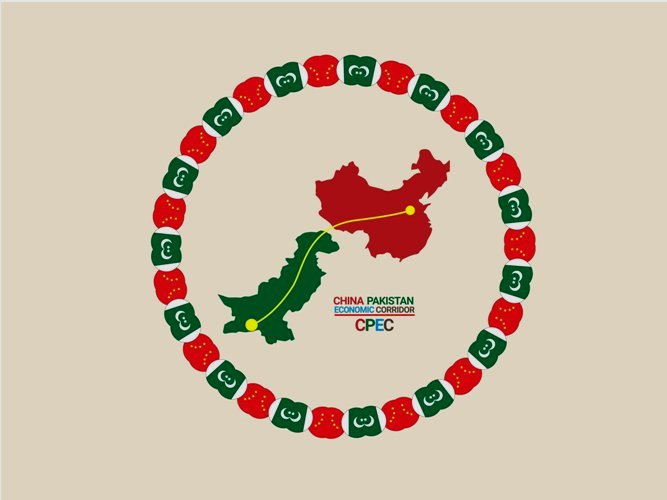
China’s developmental peace model and ties with Pakistan
Ruqayya Anwer
Published:19 May 2022, 12:35 PM

China’s developmental peace model and ties with Pakistan
With the China-Pakistan Economic Corridor (CPEC) based on Beijing’s ‘developmental peace’ model, China and Pakistan promise a project that will enhance regional prosperity based on a win-win strategy
China is one of the world’s greatest economies and its largest developing country. It not only possesses Asia’s largest economy, but it also has a motive to contribute to regional peace to enable the implementation of Chinese President Xi Jinping’s Belt and Road Initiative (BRI), which is aimed at helping China and its Asian and African allies expand economically.
Over the past 5,000 years, Chinese people of all ethnic groups have worked diligently and wisely to build a magnificent culture and a cohesive multiethnic country. The Chinese culture is distinct in that it is long-lasting, inclusive and open. Moreover, through decades of interaction with the rest of the globe, the Chinese nation has sought to learn from other nations and develop itself, contributing significantly to the advancement of human civilization.
Overcoming challenges and downfalls, the Chinese people have progressed with the times, drawing on both knowledge and lessons from China’s and other countries’ development, deepened understanding of the laws governing human society’s development, and encouraging the socialist system’s self-improvement and growth. As a result, after a long battle, the Chinese people have succeeded in identifying a route of development that conforms to China’s reality, a road of socialism with Chinese features. China’s overall goal of peaceful development is to promote domestic prosperity and harmony while pursuing international cooperation and peace.
While China is the world’s largest developing country, it wants to help other developing countries by utilizing the same strategies it used to get through poverty. However, following China’s non-intervention principle, China must provide this assistance while respecting the host country’s sovereignty. This means that China would work hard to improve the lives of its citizens and contribute to human progress via hard labor, innovation and reform, building long-term friendly relations and fostering equality and mutually beneficial cooperation with other countries. This has evolved into a national commitment reflected in national development strategies and progress made in China’s development.
A model that benefits all
A small group of Chinese researchers coined the phrase "developmental peace." In 2019, He Yin, a well-known scholar, stated that developmental peace is a significant departure from liberal peace because it is based on China’s peaceful rise and international aid practices and that developmental peace aims to achieve political stability backed by strong institutions and economic development. The main goal of China’s peaceful development is to achieve modernization and common prosperity for the people.
Only when a country’s national conditions allow for development is it viable. In the Chinese environment, China’s development path has taken shape. China is well aware that peaceful development is a long-term process and that the current internal and international contexts are undergoing significant and complicated changes.
The principle of maintaining the stability of governing institutions and providing foreign aid without political strings is based on China’s own experience of strong state-led development and oversight of political reforms and China’s principle of maintaining the stability of governing institutions and providing foreign aid without political strings. Even if there is no conscious desire to do so, China is poised to become a major player in peace building for the simple reason that the payout of its political and economic activities in post-conflict societies will give it both a major stake in their stabilization and the resources required to play a leading role.
Moreover, many Chinese initiatives in peacekeeping, conflict mediation and infrastructure construction, for example, are arguably already pointing in this direction and may eventually converge in this paradigm. Due to its geographical and demographical characteristics, South Asia has focused on global attention. This region in general, and Pakistan in particular, has received attention since it launched the BRI.
China-Pakistan ties
China and Pakistan have agreed to construct the China-Pakistan Economic Corridor (CPEC), which is supposed to bring peace and prosperity to South Asia. The visualization of mutual success and economic development is linked to provincial connectedness and growth. This project, which is seen as the main pillar of the BRI, connects Pakistan and China to more than 60 countries, not just their immediate neighbors.
The CPEC also includes multiple energy, hydro, nuclear, coal and solar power projects totaling 21,690 MW, the development of numerous economic zones, and the Pakistani city Gawadar’s ports and international airport renovation. The CPEC promises to benefit 66% of the global population, including Europe, Asia and Africa.
The CPEC is a regional connectivity structure as it will benefit China and Pakistan and Iran, Afghanistan, the Central Asian republics and the regions. Improved road, rail and air transport networks with frequent and free exchanges of expansion and people-to-people contact enhanced understanding through academic, cultural and regional knowledge and culture, the activity of higher volume of trade and business flow, producing and moving energy to have more optimal businesses, and enhancement of cooperation through a win-win model will result in the well, interconnected region.
Pakistan and China hope that the CPEC will help them expand economically and bring peace and prosperity to Pakistan’s less developed areas. It is a journey toward economic regionalization in today’s globalized world. It established peace, progress and a win-win paradigm for all of them. It promises a brighter future in the area, with peace, prosperity and economic growth.
The article first appeared on Asia Times